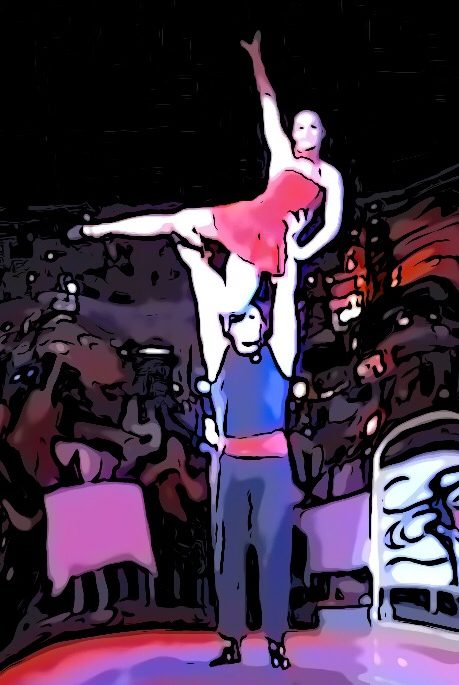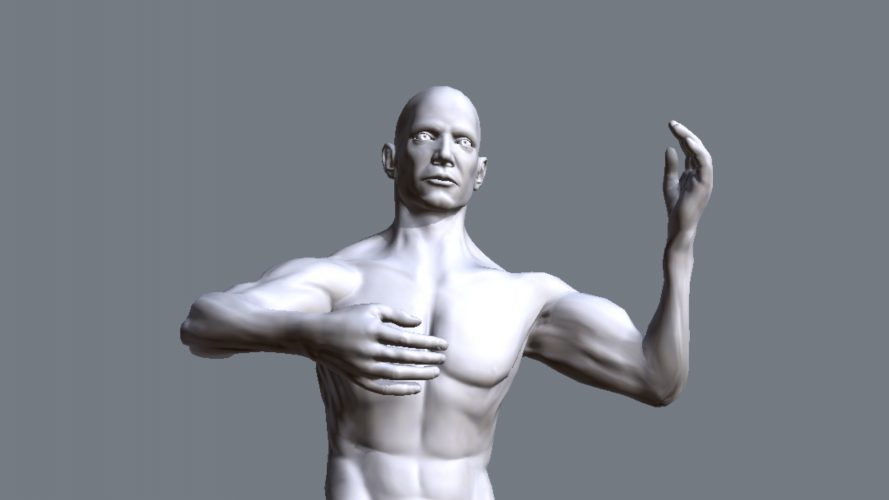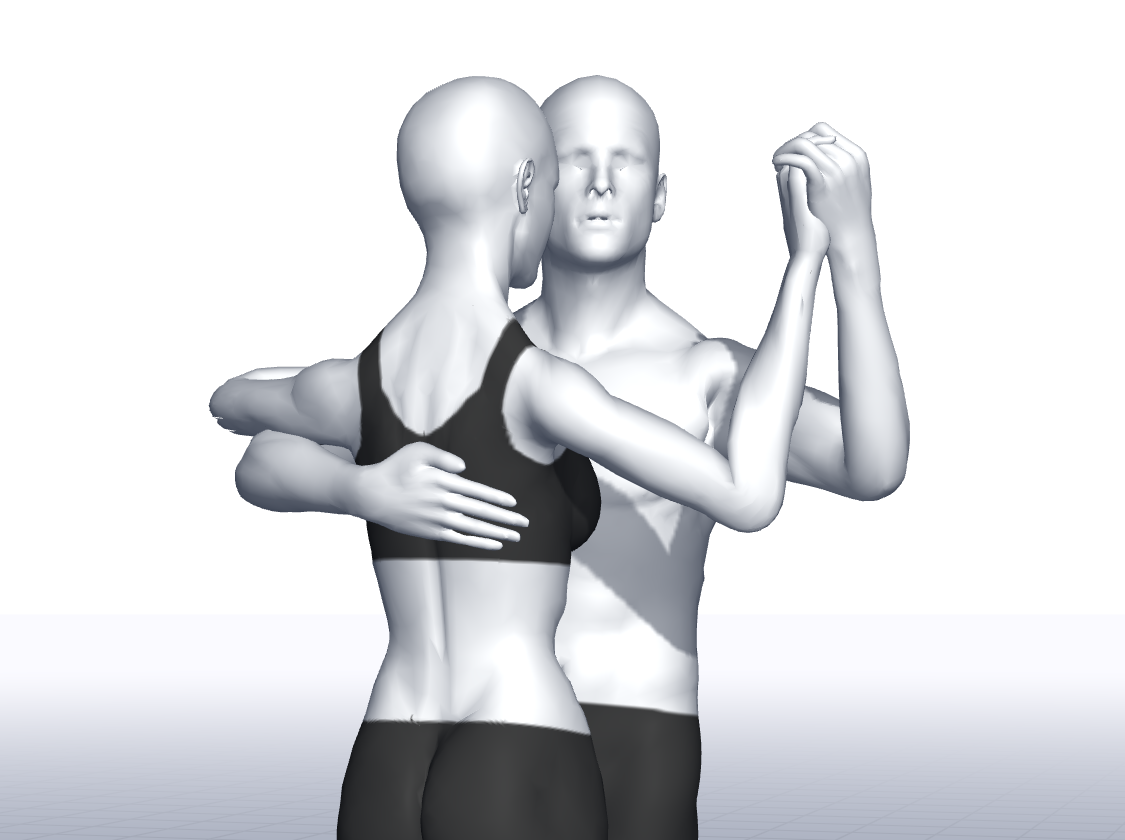There is hardly anything that is discussed as complex as the dance posture. Interestingly, roles are already derived by the arm posture. When asked why the leader has the left arm on top, so far I’ve never received a biomechanically plausible answer from world champions. Dancing is by nature a ritual that reflects a sense of intimacy between the sexes, especially in couple dancing. Therefore, a dance touches me only when the dancers stay in their roles. For me especially the comparison with paintings and frames fits. The woman is the painting and the Lord is the frame. The frame should never distract from the painting … because the centerpiece is the painting!
In addition, are splitted roles like “leading” and “following” still useful? Or is this just another marketing gag of today’s dance teachers? In my understanding, a dance is synonymous with a dialogue. An impulse generates a reaction at the partner, to which I can react. If the impulse is not interpreted in the original sense, I can not say, “You are not following!” As a source of impuls, I have at most the chance to pick up a new idea of movement and to translate it into music. Sometimes just because of this arise beautiful dialogues.
Ballroom


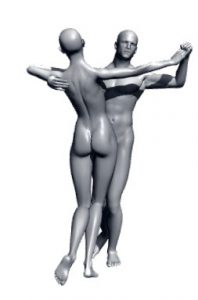
In ballroom, the dance posture was originally very similar to today’s tight tango pose. Ballroom as a competitive sport changed the posture over the last decades. Tournament couples have always been focussed on a lot of presence in the stance and a high dynamic in the movement. I call this the Evolution of the Ballroom. This lead to more distance between the heads and the stepsize were getting bigger. The woman no longer stands before the man, but at the side next to him. Both partners hold a strong twist in the middle of the body, so the respective center still shows towards the partner.
As an essential evaluation criterion, the posture characterizes the dance and should always appear effortlessly. At the same time, the couple dancing is the only sport known to me, in which 2 participants form a unit, although they move contrary. So one partner always goes backwards as soon as the other one goes forward.
Another criterion in ballroom is the dynamics, which gives the dance a desired sporting component. Judges usually have a distance of up to 50 meters to the pair and those want to be seen by all judges, possibly several times during a dance. Someone who stops, risks being overrun. Closed foot positions will rarely be found in the world class. The music can therefore (unlike the Argentine Tango) not be painted with the feet, but only with the entire body, especially the heads. Moved arms are taboo because they create too much unrest in the couple and the illusion of unity is lost.
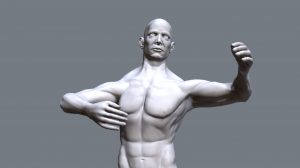
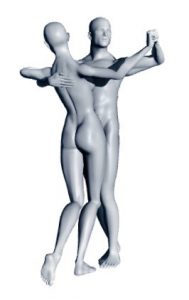

The tango in ballroom has a special status, because the staccato of the music does not allow metronomic or pendulum swing. The tango music in the ballroom contains little or no legato and the required dynamics rarely allow painting with the feet. Thus, also in ballroom tango, the music is interpreted by the bodies and in particular the heads. Each step has its own impulse and gives the impression of a very controlled movement, although the actual dynamics do not allow a sudden stop. The woman stands compact, slightly lateral to the man and has fast, almost jerky head movements. The difference to the Tango Argentino seems diametral. The expression of the lady in Ballroom Tango is a clear “no” while signaling a clear “yes” in the Tango Argentino. Nevertheless, the ballroom tango allows a very strong connection in the couple, which also leaves room for improvisation. This is rather uncommon in the other choreographed ballroom dances.
Tango Argentino
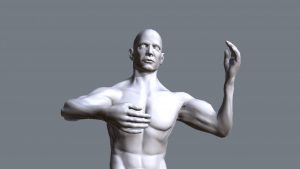
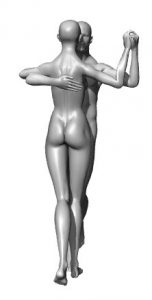
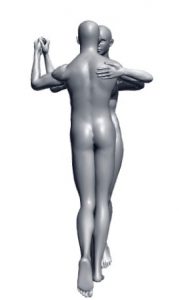
In Tango Argentino the music is not painted with the head but with the feet. By combining parallel and crossed steps, a sure feeling for the partner’s feet is essential. It is understandable that many dancers keep their eyes in the direction of the feet, especially as in a milonga (tango dance party) the feet of the other couples pose a significant risk. After all, share on a milonga about 100 couples the place that would be enough in the ballroom for a maximum of 10 couples.
A close, intimate and honest hug provides a good condition for a good connection. For me, a close embrace requires the whole arm, even if it requires more energy to keep the upper arms high. However, Tango requires less power compared to the ballroom. In addition, the Tanguer@s can better feel where each partner’s center of gravity is and which leg he is standing on. The first impulse of movement can be very well perceived and interpreted in this close posture. If the heads are close together, it emphasizes the genuineness of the hug and generates more leg room as the hips can be held back somewhat. The own center of gravity remains on the own feet. Leaning at is not in accordance with the teachers opinions but is often danced. It bothers me in the moment, when the lady’s heels no longer have contact with the ground, as their impulses or also their reaction to my impulses are difficult to recognize.
In contrast to ballroom, the posture in Tango Argentino can change from close to wide and back again. The hands of the closed side slide apart and then together again. The left hand of the lady touches in the tight posture on the left! men’s shoulder or somewhere on his back. If the posture opens, she slips her hand along his shoulder and continues to slide along the right arm of the man in direction to his hand. At the same time, the actually open side will close more and more.
In the wide posture, the intimacy of the close posture naturally gets lost and there are already arrangements necessary. Is the first impulse of movement conveyed to the partner by pulling or pushing through the arms? Partners can either be invited by following the pressure or by avoiding him. The movement can be circular or linear around the partner. Everything works, but without collusion it comes to misunderstandings. This creates a frame that no partner should destroy. The own freedom of movement and the resulting styles are almost unlimited. For me, however, this limit is exceeded as soon as the overall impression is more like a Discofox.
Deutsch
